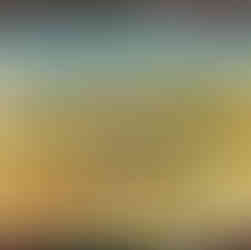UAL/Clifford Chance Sculpture Award - Starting the research
- Jo Boddy
- May 23
- 4 min read
In the previous post I detailed my starting point - the proposal that won me the award. This post will look at how I built on the little research I'd already done and started thinking about what the imagery might look like in more detail.
I felt both daunted and excited by the prospect of a new place to explore, my work to date has largely focussed on the natural world, and I won't lie, skyscrapers are well out of my comfort zone! My initial research to write the proposal had revealed that the docks were only built a little over 200 years ago, the first opening in 1800. Eventually there would be the East and West India docks and later, to the south, the Millwall dock. Very little of the docklands infrastructure now remains, warehouse number 1 which houses the London Docklands Museum and a few cranes seem the only obvious survivors aside from the docks themselves which have been bridged so it's hard to imagine tall masted ships berthed here..
The top row of images are photographs taken around the northern docks area. The middle row left hand picture shows the City skyscrapers from the Docklands Museum, the middle is an artists impression of what the docks will look like according to the original plans, the left image is a survey of the land prior to the docks being built (late 1700's); you can see the Poplar Cut, a small lake left from the natural process of the meander in the river starting to be cut off (which would eventually leave an ox-bow lake to the south and a straight river cutting across where the docks were built). Human intervention prevented this from happeneing by building embankments along the shore so the famous meander is preserved. The bottom row is a map showing the proposed docks and all the wharfs along the river bank (which couldn't cope with the volume of river traffic hence the docks), the middle image is a model showing the completed docks and to the right is the new Canary Wharf development which now stands. The museum is a fascinating place. You can go on a journey from the late 1790's through to the present day with all aspects of life in the docks explored including the dock workers, their families, the goods, enslaved peoples, supporting industries, WW1 and 2, the decline of the docks, the loss of the community and the more recent transformations since the docks closed in the 1980's. I've now visited 3 times and still feel like I've barely touched the sides!
Right from the start the thing that struck me most was how recently this area of land was built upon. I think of Canary Wharf as very much part of central London (yes, I know it's out to the east but it's just so big and shiny it screams 'CITY' at me!) it's incredibly easy to reach by tube and boat, a land of gleaming silver-blue skyscrapers. Just 200 years ago this was marshland with some animal grazing which seems very recent given the long history of London! Indeed the southern part of the Isle of Dogs was developed even later that the northern part, the Millwall dock didn't open until 1868 and not quite all of the land was built upon.
For my huge 7mx2.5m(ish) collage proposal I knew I wantde to use salt marsh imagery for the land so I needed to go and find some saltmarshes for inspiration for the imagery. I plan to make lots and lots of prints and collage them all together with the overall effect being an aeriel view of the Thames meander and the Isle of dogs but it needs give the viewer some images of what the land may have looked like when it was marsh when viewed close up. Rather handily I visit Norfolk reasonably regularly so I drove the wrong way (south) around the M25 and my faithful muddy dog and I went looking for some Thames based marshy spots on the way to visiting some marshland in Norfolk.
The top row show the Thames just after the Dartford crossing heading north. The distinctive skyscrapers at Canary Wharf are visible in the distance, it seemed strange seeing them from the other side! The middle row is a sketch looking at the Thames mud (left), marshland with Carr woodland (middle) and a sketch of reeds (right) both at Hickling Broad in Norfolk. The bottom row are Salthouse on the North Norfolk coast sketching the marsh (left), the completed sketch (middle) and the holiday cottage kitchen table converted to print studio to start making test prints (right).
I have quickly realised that I really enjoy hunting out marshland and sketching it, I even want to sketch some wetland bird species since I've noticed it's the birds that are most apparent in these habitats. Predictably I'm struggling a lot more with the built part of the challenge. I'm just not very interested in buildings. I also can't draw a straight line, even less so two parallel straight lines so the built part of the imagery is going to be the part that tests me the most.
I've been trying to approach it the same way I approach all imagery, via sketching. I've been and sketched directly but also sketched from a picture of the model of the buildings (third image) which was interesting as the perspective and angles are different.
I think I'm beginning to make progress, the next step is to start making some prints from the sketches...
















































Comments